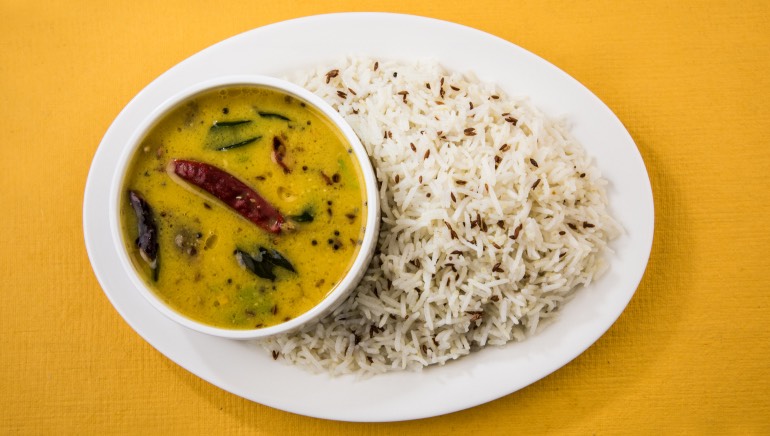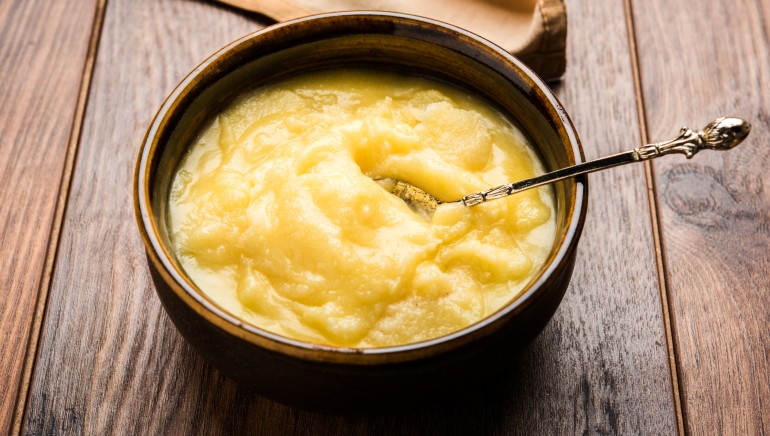
Nutrition is the cornerstone of a healthy lifestyle, and yet, it doesn’t get the kind of importance it deserves! In the last few years, several food trends have gained prominence that promise a slim waistline and those perfect curves, but are they really worth it? Fitness is not just about weight loss, but using nutrition as a tool to nourish your body, inside out.
Unfortunately, in the race to look a certain way, people give up on the daily Indian diet that offers a whole array of nutrients. There are growing misconceptions around the cuisine that make people think the dal-sabzi-roti rice we consume is ‘fattening’ and ‘harmful’ for health. Well, that’s not true in any way!
Smoothies and salads might be ‘in’ and consuming them from time to time is not a bad idea. But if you rely on them for your daily nutrient intake, you’re surely going to suffer in the long run. Contrary to popular perception, an Indian diet has everything and more you’re looking for not just to lose weight, but to keep your vitals in proper order. Plus, you also get healthy skin, lustrous hair and so much more. Now, isn’t this trade-off worth a shot?

And to tell us more about how eating desi can help us achieve that perfect body, we have with us Jinal Shah, senior nutritionist with team Rujuta Diwekar, who has always propagated healthy eating practices. In an exclusive chat with Health Shots, she helps to deconstruct the concept of holistic wellness, significance of the Indian diet, and what a healthy and balanced diet really looks like!
Holistic wellness is an oft-used world in the health and fitness circles today, but not many understand what it really means. There are varying versions floating around, which often leaves people confused! Jinal, who has been closely working with Rujuta for a decade, helps us deconstruct the concept.
“My inspiration has only been Rujuta’s books, and learning from and working directly with her. In nutrition college, there was a constant conflict in my mind about what we were taught and its real life application. Dividing food into carbs, proteins, fats, and counting calories without an actual understanding of the individual’s culture, food preferences, season, climate, etc., seemed like an impractical and unsustainable method of planning for one’s health and wellness. From Rujuta’s books, I learnt that it’s very important to keep the diversity in our diets, change them according to the season and patronise local food produce to support our farmers. Because this is the only foolproof method that ensures good health for our individual health, the local economy and the global ecology,” she adds.
Jinal says that if she’s learnt something from Rujuta, it is about how diet trends come and go and leave behind a history of fat, confused, unhealthy and unhappy people. That’s why every food trend has a shelf life, and does not support long-term health and fitness goals.

“We can clearly see this happening around us; the people who were avoiding ‘fat’ for years together today are the same ones doing keto. Kal ka villain, aaj ka hero, par bakra same hain, hum. But a good diet is like true love, it sets you free,” adds Jinal.
That doesn’t hold true in case of the Indian diet that encourages each person to eat foods that are local and seasonal. The food is not just healthy but also climate-resilient, she says.
“It encourages diversity in our diets, is wholesome, tasty and nutritious too. But the problem is the constant bombardment of the weight loss industry, and so-called influencers who want us eating out of packets instead of our home kitchens. Every Indian, at heart, truly feels that our food is the best and knows that Indian food wisdom has stood the test of time. But unfortunately we lack the confidence to eat according to our traditions and undervalue our culture, cuisine and cooking. So we wait for the haldi doodh to become ‘turmeric latte’ and ghee ‘clarified butter’,” explains Jinal.
Select Topics of your interest and let us customize your feed.
PERSONALISE NOW“Our grandmothers are the real torch bearers of food wisdom and diet secrets. They have a solution to almost all daily life problems, be it bloating, insomnia or plain boredom. Our work is heavily borrowed from the collective food wisdom of our grandmas, who knew how to fix a broken heart or a broken immune response with inexpensive, locally sourced, easy to cook, ingredients at home. That’s exactly what we call them nani-maa ke nuske, right?,” says Jinal.
The team at Rujuta Diwekar also has a test called ‘the grandmother’s test’ to clear confusion about whether a particular food is good for us or not, she adds.
It has two steps:
1. Does your grandmother recognise it as food?
2. Did she eat it while growing up?
The food has to pass both the steps, for it to be good for you to eat.
Moreover, there are three grandma-approved foods that Jinal recommends people to incorporate in their diets:
1. Ghee: One teaspoon with all meals. Helps to achieve acne-free skin, lustrous hair and strong bones. Ghee also helps in the assimilation of vitamin D3, which is important for optimum thyroid functioning and immunity boosting. Make ghee at home from full fat desi cow or buffalo milk.

2. Rice: It is rich in essential amino acids, which helps to preserve muscle tissue and make you look young and toned. It helps beat bloating and works especially well for dinner for a good night’s sleep. Eat the local, hand pounded or single polished rice.
3. Bananas: It is a prebiotic and helps to improve the diversity and integrity of gut bacteria. It’s a wholesome meal, so you can have it first thing in the morning, when running late for your lunch, or as an evening snack between 4-5 pm. It could also be a late-night meal option.
As per Jinal, a healthy and balanced diet has foods that you have grown up eating. In other words — local, seasonal, and traditional. They shouldn’t be low-cal, exotic, unpronounceable and expensive.
“A very common confusion that people have is how much they should eat. To address this confusion, we have designed a tool called the ‘mental meal map’,” she adds.

Step 1: Visualise how much you would like to eat
Step 2: Serve yourself half of that amount
Step 3: Eat your meal slowly
Step 4: If still hungry, start again from step 1
Jinal also gives us a piece of advice on the right way to eat food,
“Eat your meals in the time tested proportions of grains, vegetables, pulses and accompaniments. If you look at any traditional meal from anywhere in India, you will find that there is a proportion of roughly 3:2:1 between grains: sabzi/dal: pickle/papad/curd. This way of eating leads to optimum digestion of the meal. And you don’t have to do anything special for this, just follow time-tested recipes and cooking methods of your family,” she recommends.
For all those who want to get healthy and fit in the true sense, Jinal has some simple and practical tips for you.
“Don’t seek approval of the weighing scale. Body weight is not an indicator of your thinness, strength, fatness or fitness. Stand on your own two feet and see how light and energetic you feel. Eat without fear and guilt. Remember that fear is fattening, not food. Eating local, seasonal and traditional is your secret to long term good health and sustainable fat loss. Lastly, make time to exercise, for at least 30 mins daily. Strength training is very important for women to maintain good hormonal health, bone density and body tone. And remember that exercise is not a punishment or a method to wash away the guilt of overeating;. it’s an act of nurture. So, if you have eaten your favourite mithai on Holi, don’t over exercise to compensate. Remember that you are worthy of good food,” she says, signing off.